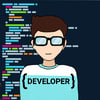Not everything in the universe is constant except the change. We adopt the changes, and that is how the world is developing. The same thing applies to the technology as well. Latest trends in every technology help in making the world a better place to survive. Here I just want to mention some of those top trending technologies to learn in 2018 to make the best of your career.
So, lets make a new year resolution to master any one of the below technologies:
1.Artificial Intelligence
Blockchain
Augmented Reality and Virtual Reality
Cloud Computing
Angular and React
DevOps
Internet of Things (IoT)
Intelligent Apps (I – Apps)
Big Data
RPA (Robotic Process Automation)
So, the countdown begins from here.
1.Artificial Intelligence
Artificial Intelligence Training – Explore the Curriculum to Master AI.
Artificial intelligence (AI) has received increased attention in recent years. Innovation, made possible through the Internet, has brought AI closer to our everyday lives. These advances, alongside interest in the technology’s potential socio-economic and ethical impacts, brings AI to the forefront of many contemporary debates. Industry investments in AI are rapidly increasing, and governments are trying to understand what the technology could mean for their citizens.
The collection of “Big Data” and the expansion of the Internet of Things (IoT), has made a perfect environment for new AI applications and services to grow. Applications based on AI are already visible in healthcare diagnostics, targeted treatment, transportation, public safety, service robots, education and entertainment, but will be applied in more fields in the coming years. Together with the Internet, AI changes the way we experience the world and has the potential to be a new engine for economic growth.
Current Uses of AI:
Although artificial intelligence evokes thoughts of science fiction, artificial intelligence already has many uses today, for example:
Email filtering: Email services use artificial intelligence to filter incoming emails. Users can train their spam filters by marking emails as “spam”.
Personalization: Online services use artificial intelligence to personalize your experience. Services, like Amazon or Netflix, “learn” from your previous purchases and the purchases of other users in order to recommend relevant content for you.
Fraud detection: Banks use artificial intelligence to determine if there is strange activity on your account. Unexpected activity, such as foreign transactions, could be flagged by the algorithm.
Speech recognition: Applications use artificial intelligence to optimize speech recognition functions. Examples include intelligent personal assistants, e.g. Amazon’s “Alexa” or Apple’s “Siri”.
The Internet Society recognizes that understanding the opportunities and challenges associated with AI is critical to developing an Internet that people trust. This is particularly important as the Internet is key for the technology behind AI and is the main platform for its deployment; including significant new means of interacting with the network. This policy paper offers a look at the key things to think about when it comes to AI, including a set of guiding principles and recommendations to help make sound policy decisions. Of particular focus is machine learning, a specific approach to AI and the driving force behind recent developments.
Artificial Intelligence Training – Explore the Curriculum to Master AI and Deep Learning.
- Blockchain
Blockchain Training – Explore the Curriculum to Master Blockchain.
Blockchain is not just the technology behind the Bitcoin cryptocurrency; it also has the potential to revolutionize many areas of our everyday lives. But there is still a long way to go.
Blockchain is the leading digital assets platform which records and controls the monetary information. It is basically an endless data chain. Like a booking system, it captures and stores any and all activity in the system, whether money transfers, land registry entries or concluded contracts.
This is a short report that looks at the potential in research and education of blockchain, the technology that underpins the Bitcoin virtual currency.
Blockchain is currently at the peak of the hype cycle
Blockchain is currently at the peak of the hype cycle, so I spend a little time looking at how we can identify what’s realistic and avoid inflated expectations.
Blockchain’s Bitcoin origins
The early history of Bitcoin is worth reflecting on:
2007: “Satoshi Nakamoto” allegedly begins development of the Bitcoin virtual currency
2009: Version 0.1 of Bitcoin is released on SourceForge, and the first transaction takes place
2010: Programmer buys pizza for 10,000BTC (now worth $39,454,600!)
2011: Silk Road “dark web” marketplace opens
2011: 25% of the 21 million possible Bitcoins now generated through mining operations
Let’s unpack this a little. Bitcoins are generated from thin air by computers solving complex mathematical puzzles - a process known as “mining” - and there are a finite number of them. Not only this, but the puzzles get more complicated as more Bitcoins are mined.
Blockchain Training – Explore the Curriculum to Master Blockchain.
- Augmented Reality and Virtual Reality
What is Virtual Reality?
What is Augmented Reality?
Augmented reality (AR) is a technology that layers computer-generated enhancements atop an existing reality in order to make it more meaningful through the ability to interact with it. AR is developed into apps and used on mobile devices to blend digital components into the real world in such a way that they enhance one another, but can also be told apart easily.
AR technology is quickly coming into the mainstream. It is used to display score overlays on telecasted sports games and pop out 3D emails, photos or text messages on mobile devices. Leaders of the tech industry are also using AR to do amazing and revolutionary things with holograms and motion activated commands.
Virtual reality (VR) is an artificial, computer-generated simulation or recreation of a real life environment or situation. It immerses the user by making them feel like they are experiencing the simulated reality firsthand, primarily by stimulating their vision and hearing.
Augmented Reality vs. Virtual Reality
Augmented reality and virtual reality are inverse reflections of one in another with what each technology seeks to accomplish and deliver for the user. Virtual reality offers a digital recreation of a real life setting, while augmented reality delivers virtual elements as an overlay to the real world.
- Cloud Computing
Cloud Compuing – Explore the Curriculum to Master Cloud Computing.
Simply put, cloud computing is the delivery of computing services—servers, storage, databases, networking, software, analytics and more—over the Internet (“the cloud”). Companies offering these computing services are called cloud providers and typically charge for cloud computing services based on usage, similar to how you are billed for water or electricity at home.
Still foggy on how cloud computing Services works and what it is for? This beginner’s guide is designed to demystify basic cloud computing jargon and concepts and quickly bring you up to speed.
AWS Training Explore the Curriculum to Master Blockchain.
5 Angular and React
Angular And React Trainig – Explore the Curriculum to Master Angular and React.
AngularJS is an open-source web application framework protect by Google and by a community of corporations and individual developers to address many of the challenges encountered in developing single-page applications. It desires to facilitate both the testing and the development of such applications. AngularJs also powers some active Google ranking, applications from the Double Click Digital Marketing Platform to the YouTube app on the PlayStation 3. AngularJS combine an elegant framework for organizing your client-side JavaScript in a way to maximize reusability and testability. AngularJS allows you to create scopes in the DOM that behave similarly to scopes in JavaScript and other programming languages.
Angular and React Training – Explore the Curriculum to Master Angular and React.
6 Devops
Devops Training – Explore the Curriculum to Master Devops.
DevOps is a word that is used to describe a set of modern IT practices which seek to more closely bring together software developers and operations staff to work on the same project in a more collaborative manner. The desire is that by breaking down barriers which have traditionally existed between these two sides of the IT department, organizations can reduce the time and friction involved in deploying new versions of software. This effort will ideally lead to shorter development cycles which ideally may save time and money, and give the organization a competitive edge against others with longer, more traditional development cycles.
Why pursue a DevOps strategy?
Rapid innovation is no longer optional. No matter what industry your organization operates in, it is almost certainly an industry that is seeing upheaval of traditional business practices due to the move towards a software-defined economy. From transportation to manufacturing, mining to farming, finance to healthcare: big data, cloud computing, mobile applications, and a slew of other technology are making software the key differentiator between those businesses and organizations that get ahead and those that fall behind.
Even if your organization wasn't competing in the software market a decade ago, today it is, and the way to get ahead is to bring better solutions forward fasters.
How do I get started?
The first steps into DevOps are about examining your culture and practices, identifying the barriers to cross-team communication and coordination, and taking the steps necessary to bridge communication between your development and operations teams. Achieving this is a challenge, but you don't have to get there overnight. Begin by taking a look at your current methodologies and ask yourself what's not working, and where the opportunities for better cross-pollination may exist.
While DevOps is in many ways about organizational culture, identifying the right software tools is an important step as well. Is your organization using for source control and revisioning tools like Git to help you manage code? Are you adopting continuous integration and build tools to make the movement from source to testing as seamless as possible? What about tools for automating the testing and packaging of their software, or for deployment and security testing? Are you looking at ways to manage your infrastructure like code with configuration management tools, to easily scale and replicate environments? And what about monitoring tools to keep an eye on the whole process from development to production?
DevOps benefits from finding the right tools to keep your development and operations teams working together and moving faster.
Where can I learn more?
Opensource.com has published a number of articles on DevOps; check out our tag set or some of our more popular articles below.
What's the point of DevOps?: A brief history of DevOps demonstrates the need to think differently about collaborative IT work.
3 steps to secure, open source DevOps:
The key to secure app development is to "shift left"—move security testing away from late-stage production and back towards design and development.
Top 5 programming languages for DevOps: We round up five of the top programming languages for DevOps and a few handy learning resources for each.
A developer's journey through DevOps: The days of siloed development and operations teams is over.
Secured DevOps for microservices: Containers and microservices have revolutionized application development and infrastructure management.
DevOps Training – Explore the Curriculum to Master DevOps tools.
- Internet of Things (IoT)
IOT Training – Explore the Curriculum to Master IoT.
This includes everything from network-based cameras, digital video recorders, to digital personal assistants. These devices can be categorized for commercial use like biometric door looks to home use like Bluetooth door lock keypads and thermostats. While these types of devices have existed for years, they have only recently been grouped and labeled IoT based on their mass adoption and, more importantly, their mass identification of security risks and privileged attack vectors. Therefore, as IoT devices become more commonplace, there is a need to ensure that they do not represent an unnecessary security risk to standard business operations. Unfortunately, it has already been proven that many of these devices are insecure by design, have unresolvable flaws, and can be leveraged to compromise an entire organization with something as simple as a default credential.
lot Training – Explore the Curriculum to Master DevOps tools.
- Intelligent Apps (I – Apps)
I-Apps are pieces of software written for mobile devices based on artificial intelligence and machine learning technology, aimed at making everyday tasks easier.
This involves tasks like organizing and prioritizing emails, scheduling meetings, logging interactions, content, etc. Some familiar examples of I-Apps are Chatbots and virtual assistants.
As these applications become more popular, they will come with promise of jobs and fat paychecks.
9.Big data:
Big data Training – Explore the Curriculum to Master RPA.
Big data is a term that describes the large volume of data – both structured and unstructured – that inundates a business on a day-to-day basis. But it’s not the amount of data that’s important. It’s what organizations do with the data that matters. Big data can be analyzed for insights that lead to better decisions and strategic business moves.
Big data refers to problems that are associated with processing and storing different types of data. Most of the companies today, rely on big data analytics to gain huge insight about their:
customer,
product research,
marketing initiatives and many more.
For your surprise, big data led Germany to win the world cup.
Hadoop and Spark are the two most famous frameworks for solving Big Data problems.
If you already have some knowledge of Big Data, splendid! If not, now is the time to start.
10) RPA (Robotic Process Automation):
RPA Training – Explore the Curriculum to Master RPA.
Generally, any desk job in any industry involves tasks that are repetitive in nature and can be automated.
RPA or Robotic Process Automation allows you to automate such routine and repetitive tasks.
You don’t need to write any code to automate repetitive tasks.
In 2018, the trend of bots and machine learning is only going to skyrocket, which means RPA will become an invaluable skill to have.
Choose one or choose all, either ways have a happy career this 2018!






Top comments (0)